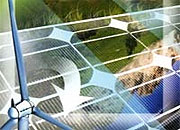Turnover increased by EUR 24.5 million (+ 13.2%) compared to previous year. The EBITDA increased by EUR 10 million to EUR 63 million (+ 18.9%). Net profit decreased by EUR 5.3 million to EUR 9.4 million (-35.9%), mainly due to higher depreciation charges.
According to Andri Avila, the company’s Financial Director and Member of the Management Board, the overall operating environment was mostly influenced by the price of the C02 emission quota, which rose to EUR 25.6 per tonne (+ 76%) on average per quarter.
“According to the strategy, we have made significant investments in diversifying our product portfolio in recent years and we will continue to do so in the future. While the price of CO2 is currently putting significant pressure on oil shale-based electricity production, the market price of electricity has also risen. This has increased the profitability of the company's other business lines, particularly renewable energy, ” commented Avila.
Eesti Energia's renewable energy production increased more than three times over the year to 250 GWh, most of which came from wind farms (194 GWh). The amount of renewable energy produced from biomass doubled to 40 GWh in a year, of which Narva power plants provided 30 GWh.
In Eesti Energia’s production portfolio, the proportion of electricity produced from renewable and alternative sources increased to 33 percent on average per quarter.
Total electricity production fell to 1.2 TWh (-42.9%) and the trend of the company selling more electricity (1.8 TWh) than its own production, continued. Electricity sales revenue increased by 23.1% to EUR 109.7 million.
Eesti Energia produced 93.5 thousand tonnes (+ 3.7%) of shale oil and sold 113.1 thousand tonnes (+ 12%). Although crude oil prices decreased compared to previous year, fuel oil prices increased. The average selling price of fuel oil rose to EUR 281.4 per tonne (+ 6%).
Sales of network services remained at the previous year's level, but due to the tariff drop at the beginning of the year, the sales revenue decreased by 3.8 million. This money remained additionally in the hands of consumers.
Eesti Energia invested 45 million (-5%) in the second quarter. With the purchase of solar parks, Enefit Green, a renewable energy subsidiary, entered the Polish renewable energy market, but the lion's share, or 20 million, Eesti Energia’s subsidiary Elektrilevi invested in the electricity grid.
There were more than 850 new network connections (+ 29%) reflecting economic activity, while new generation capacity added to the network increased by more than seven times, or 35 MW.
29 Декабря 2025 | понедельник | 01:25


